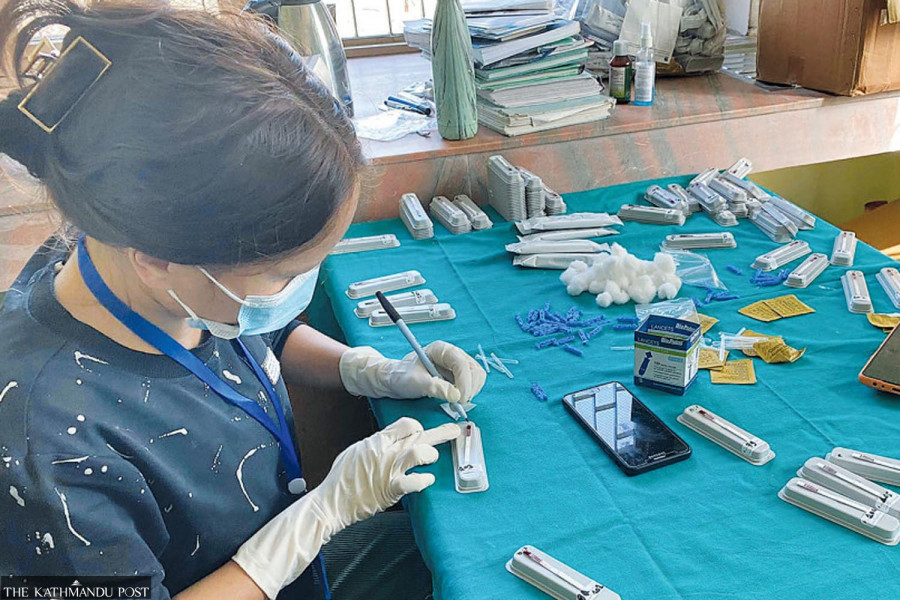Health
In some districts, few takers for filariasis drug
Ongoing drive against the disease will last till March 14.
Arjun Poudel
Health authorities in 15 districts endemic to lymphatic filariasis or elephantiasis have extended an ongoing mass drug administration programme, as coverage of the programme remains lower than expected.
The two-week-long campaign, started on February 23, will extend to March 14, according to officials at the Epidemiology and Disease Control Division.
“We have decided to extend the campaign, since three days were lost to various public holidays,” said Dr Gokarna Dahal, chief of Vector Control Section at the division. “Coverage of the campaign is also low in some Tarai districts compared to other places.”
Lymphatic filariasis is a mosquito-borne parasitic disease caused by filarial worms transmitted by different species of mosquitoes, including Culex, Anopheles, and Aedes.
It is the second major infectious disease after leprosy that causes permanent and long-term disability, in Nepal.
Doctors say the disease may be acquired during childhood and its visible manifestation may occur only later in life. The disease can lead to temporary or permanent disability, pain, and social stigma.
The World Health Organisation has identified the disease as a major public health problem, with an increasing prevalence worldwide. Nepal is one of the 73 countries where lymphatic filariasis is endemic.
Of the 15 districts, authorities resumed drug administration in four districts of the Madhesh Province—Rautahat, Sarlahi, Mahottari, and in Dhanusha—where six rounds of mass drug administration programmes were held in the past, but were stopped later. Officials said that the four districts failed to achieve the minimum coverage in the third round of transmission assessment survey.
Other districts where the mass drug administration programme has been launched are Jhapa, Morang, Bara, Lamjung, Parbat, Baglung, Kapilvastu, Banke, Dang and Kailali.
Health authorities have launched the programme for the first time in Rasuwa (a mountain district), after a prevalence survey showed presence of the disease in the population.
Healthy people above two years old are being administered with diethylcarbamazine, albendazole and Ivermectin under the campaign.
Health workers as well as female community health volunteers have been reaching out to every household to make sure that no one is deprived of the antiparasitic drugs.
“Overall coverage rate of the campaign is only 67 percent in 10 days in Banke district, which is lowest among 15 districts,” said Dahal. “In Jhapa, the coverage rate was 68 percent on the 10th day. It seems that massive awareness programme is needed to convince people in Tarai districts about health programme.”
Officials at the division said that they received reports from health workers that some people were unwilling to take antiparasitic drugs.
The government started a mass drug administration programme to eliminate lymphatic filariasis in 2003. Under the programme, healthy persons above two years of age in 63 districts were given diethylcarbamazine and albendazole.
The disease has been eliminated from 48 districts and assessment surveys of some districts are being carried out, officials said. In some districts, the programme has continued for the last 14 years.
Of late, the authorities have started using Ivermectin, the antiparasitic drug to control lymphatic filariasis, after all their previous efforts failed to control the prevalence of the disease. The medicine was also used in Covid treatment in many countries, including Nepal.
The government had committed to eliminating lymphatic filariasis as a public health problem by 2020. But the target could not be achieved due to low coverage of the programme in some districts.
The Ministry of Health and Population had extended the deadline to eliminate lymphatic filariasis to 2028. However, it further got postponed to 2030.




 5.39°C Kathmandu
5.39°C Kathmandu














